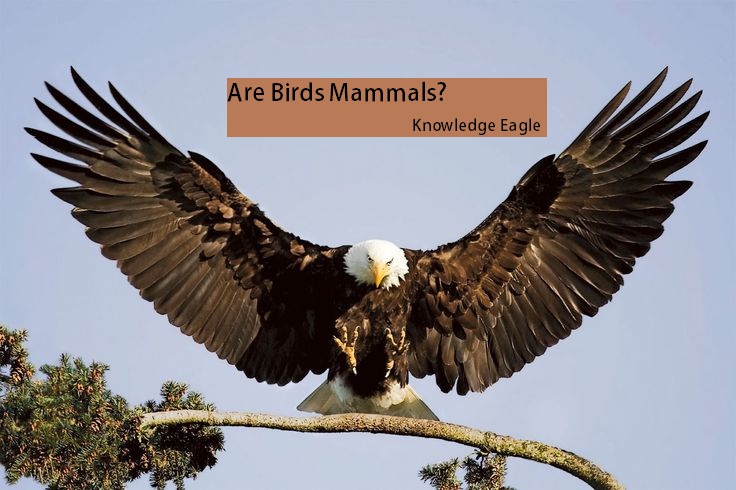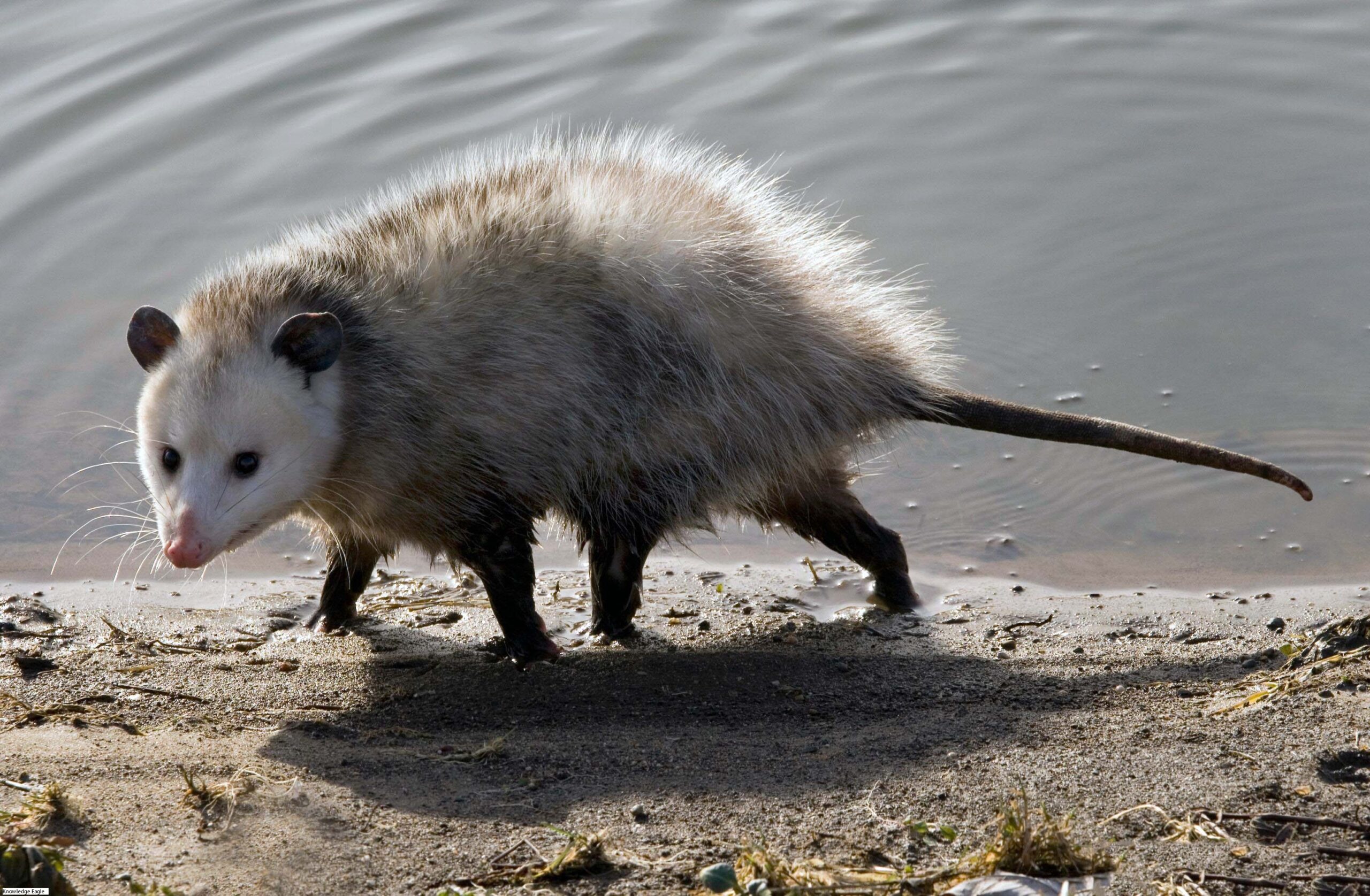Are Birds Mammals? Let’s unveil the truth with Knowledge Eagle.
Are Birds Mammals?
There are many living creatures on this planet Earth, every form is categorizes in different kingdoms, groups, classes, genera, species etc. every single group is further categorizes into sub groups. Similar to other kingdoms, animal kingdom also has many classifications. Animals are classified into animal kingdom. However, there arises some questions and many debates held on “Are birds mammals?” Considering this controversial question, in this article, we are going to find the answer of this question “Are birds mammals?” by keeping in view their key similarities and differences with mammals.
Is a bird a mammal?
Birds and mammals can be found easily on planet earth and are essential part of this universe. Both these type of animals are divided into two different classes. Birds belong to class Aves, while Mammals belong to class Mammalia. They are kept in different classes so we are close to our answer that Birds are not Mammals, they have different characteristics than that of Mammals. Now we will explain in which manner Birds are not Mammals. First, let us know a little bit about class Aves and class Mammalia!
What are Avians?
The species in which birds are classified is known as Avians, can be distinguished primarily by the presence of feathers, according to Britannica. As they have a limited sense of sound and a weak sense of smell, their primary sense is sight. They perform their navigational tasks by flight and perching. As studies differentiate birds by the presence of feathers, and feathers relate to flying, so one can say that all birds can fly, but wait! Discussion not ends here, there are birds that have feathers but cannot fly. These exceptional birds are Ostriches and Emus; both are nine-foot tall and are known as flightless birds.
What is a Mammal?
A type of vertebrate animals having incredible characteristics comprises the class of Mammalia, and the animal of this class is known as a Mammal. Their unique characteristic is that they are warm-blooded vertebrates. Mammals also have some differences among themselves like different methods of reproduction that is why they are further classified into three broad groups:
Egg-laying: Monotremes like the platypus and echidna
Marsupials: Carry their young in a pouch e.g. kangaroos and koalas
Placentals: the young develop within the mother’s body before birth. It includes most familiar mammals like cats, dogs, and humans
Which traits are common between Birds and Mammals?
Birds and mammals do share some common traits. In addition, may be the question “Are birds mammals?” arises from these key similarities. Let us discuss some common traits of birds and mammals.
Vertebrates
Birds and mammals are vertebrates, which mean they have backbone or spinal column that provide support to their body.
Endothermic
Both birds and mammals can regulate their body temperature within the irrespective of the temperature outside, and this trait make them (warm-blooded) and they are known as Endothermic.
Four-chambered hearts
Birds and mammals both have a four-chambered heart, which allows for the well-organized separation of oxygen-rich and oxygen-poor blood.
Red and white blood cells
Both birds and mammals also have red and white blood cells, the former is responsible for carrying oxygen and the latter is for defense of body like fighting infections.
Advanced brains
The characteristic that enable the birds and mammals to be the most successful living creatures on planet Earth is their advanced brains. This enable them to precept and solve the problems and learn the ways to survive themselves in different environments
Parental care:
Both birds and mammals show a high level of parental care towards their young. This is not common in other animal groups. Birds feed their young by regurgitating food, whereas mammals nurse their young using milk produced from mammary glands. Birds will build nests to lay eggs, and provide protection and shelter for their young. The parents of the birds will continue to search for food every day after birth. The same as when we feed our children, and accompany their growth. This process will continue until the young birds are able to fly on their own.
This is a fascinating and beautiful process you can learn and observe. Nest building, egg-laying, incubation and hatching of chicks are all part of this process.
You can learn a lot about birds’ life cycles, their reproduction strategies and their care of their young by observing their processes. This fascinating behavior of birds offers an insight into the complexity and diversity of nature.
What is the difference between birds and mammals?
Birds and mammals are different from each other in many ways. Here we will discuss key differences between birds and mammals and these differences will support our answer of Birds are not Mammals to the question Are Birds Mammals? Let us discuss them one by one in two groups i.e.; Physical differences and Reproductive differences
Differences based on their appearance
Feathers
The first unique property, which differentiates birds from mammals, is their feathers. Birds are the only living beings of animal kingdom that possess feathers. Feathers in addition to flying also provide insulation to protect them against seasonal environmental changes. In comparison to feathers in birds, mammals have fur or hair on their body for insulating activities.
Wings
Wings are the structures in birds, which gives the answer of the question “what makes the bird a bird?” All birds have wings, including flightless species such as ostriches and penguins. A bird’s wings are modified forearms with the hand bones fused together. Bats are the only mammals with wings, although some mammals such as flying squirrels can glide using the membrane between their limbs.
Beaks and Bills
The beak structure is another obvious difference between mammals and birds. Birds’ beaks are keratinized and toothless instead of the teethed jaws found in mammals. Bird beaks are available in a variety of shapes and sizes. From the small conical beaks of cardinals to the large colorful beaks of toucans, bird beaks can be found in every size. Beaks don’t only serve as a tool for eating. They can also be used to clean the body, fish, dig holes, or even make sounds. The Australian platypus, which has soft, duck-like, beaks without teeth, is the exception to this rule.
Movement
The way birds and mammals move is another obvious difference. The majority of birds can fly and are bipedal (walking upright on two feet). Some birds are able to swim on their legs and others can swim fast with their wings. Mammals, on the other hand, have a more varied range of locomotion. Most mammals cannot fly but they walk on four feet. Some mammals are more specialized in their locomotion. For example, dolphins, whales, and bats can fly and apes can move with their arms. Birds and mammals move differently because of their different locomotion modes.
In addition to above-mentioned properties, there are other differences in the anatomy of birds and mammals. Following are the structures, which belong to birds only;
- Hollow bones
- Scaly legs
- Song tubes
- Airbags
- Gizzard (a specialized organ used to digest food)
- Fork bones (a skeletal structure used to support flight muscles)
- The cloacal cavity
These features distinguish birds structurally from mammals. Birds are also different from mammals in respect of reproductive systems.
Differences based on the methods of reproduction
The method of reproduction is what makes birds different from mammals. Birds reproduce through the laying of eggs, whereas mammals give birth to living young. Birds lay eggs before the chicks hatch, so the female can take care of the young. Some males also help incubate and care for the eggs and chicks. Mammal pups, on the other hand, can vary widely in their development. Some are blind and helpless while others walk and run from their first day. Most mammals do not involve their males in the parenting process.
Bottom Line
After the whole discussion on Are birds mammals? we come to the clear conclusion that birds are not mammals, they have clear differences from mammals and kept in a separate class. Although they share some similar characteristics to mammals like advanced brains and parental care. However, if we study about the animal kingdom we find some resemblances among all classes, which lead to a one common ancestor, but they are still different from each class of kingdom, and all have their own separate classes. That is why birds and mammals belong to separate classes.
Birds and Mammals Interesting Questions
Is There Any Bird That Is a Mammal? / Which Birds Are Mammals?
There is one exception to the rule that birds and mammals are completely different groups. New Zealand’s Kiwi birds are called “honorary mammals” because they fill a niche in the ecosystem of the island, which are devoid land mammals. The person who does not know the properties of birds and mammals may arise the question Are Birds Mammals? after knowing about Kiwi.
Kiwi birds are small birds that share the same ancestry with ostriches, emus and other birds. They can’t fly but they don’t have wings. The birds weigh only 7 pounds. Their long, thin beaks and whiskers distinguish kiwi-birds. Their feathers resemble shaggy hair. The bones of these birds are similar to those found in mammals, as they are filled with marrow. Kiwis have strong legs, which allow them to fight and run.
Do Mammals Lay Eggs?
Birds lay their eggs. This is one of the major differences between birds and mammals who give birth to young. However, some outstanding Australian mammals can lay eggs. It is very rare for a platypus or any of the four species of echidna to lay eggs.
Do Birds Produce Milk?
Birds are among the few animals capable of feeding their young. Birds and mammals share similar parental behaviors, but they differ in how they feed their young. Birds are not able to produce milk because they do not possess mammary glands. Birds usually feed their young with the food they have collected, but others go one step further. Pigeons, for example, produce crop milk. Crop milk, a liquid high in protein that parents produce to feed their young birds for about two weeks, is called crop milk.
Is a bat a mammal or bird?
Like all mammals, bats produce milk for their young. They aren’t birds because they lack feathers and don’t lay any eggs. A bat’s wing is not like a bird’s wing.
Are Birds Mammals or Reptiles?
Are birds mammals? or Reptiles? Birds are considered reptiles from a phylogenetic perspective. According to Linnaean, reptiles and birds are separate groups due to their physical differences. Birds are their own distinct type of animal.
For more information visit Home page



